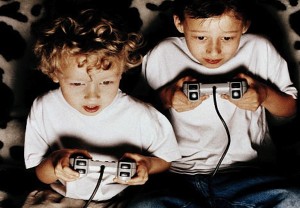I’m excited to announce that a new essay I wrote, Learning about the game: designing science games for a generation of gamers, is up in Online First for the Journal Cultural Studies of Science Education. I wrote the essay as a response to the article, Challenges and Opportunities: Using a science-based video game in secondary school settings. I’ve included the abstract at the bottom of this post, but I thought I would also include an excerpt that get’s at some of how my thinking about educational games has developed and changed through my work on several game projects.
Here is a little teaser:
“This is what happens when we bring ‘‘video games’’ into the classroom: youth insist on playing them like video games. Those same video games they have at home, where players bulldoze right through our carefully crafted instructions, try to find cheats and work arounds, and wrack up points for bragging rights. As the authors articulated in their conclusion, since ‘‘most of the students were versed in some kind of game play and were
familiar with the mechanics of computers and computer games, they did not always
experience the game in the way it was intended, or necessarily follow the path the game
prescribed. What are educational game designers to do?”
Since this is a scholarly publication, it is under lock and key, but the abstract is below and I can help direct you to a copy if you tweet me @mchmiel. I’d also encourage you to check out the original article by Muehrer and company. They did incredibly valuable research and I was fortunate to review their work.
Abstract:
This paper is a response to “Challenges and Opportunities: Using a science-based video game in secondary school settings” by Rachel Muehrer, Jennifer Jenson, Jeremy Friedberg, and Nicole Husain. The article highlights two critical areas that I argue require more research in the studies of video games in education. The first area focuses on the need to better understand how children interact with non-educational games, outside of the school setting. This includes issues such as “gamer culture” and game play styles. The better we understand these issues, the better educational game designers and implementers can imagine the kinds of behaviors that might be elicited from students when we bring educational games into their classroom. In this focus, the student is the unit of analysis, but it is the student in and out of the classroom: the way the student understands video games when she is at home, playing with friends, and at school. The second area focuses on the study of the classroom as a unit of analysis. As the authors of this study reveal, classroom cultures affect the reception and success of an educational game. This is to ask, how does a game play when students have to play it in pairs or groups for a lack of resources? What is the role of the teacher in the success of video game implementation? How does a game react to multiple server requests in a short period of time? These are issues that are still largely unexplored in the educational game design literature.
